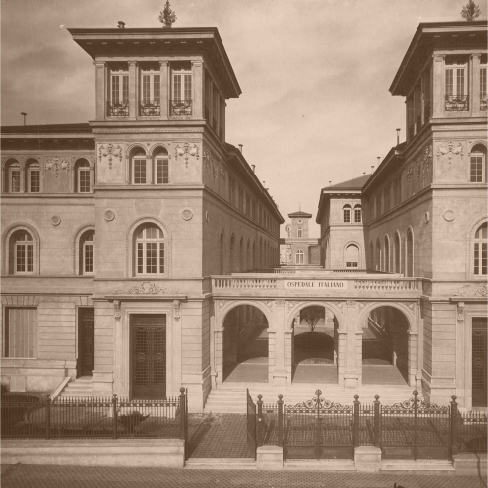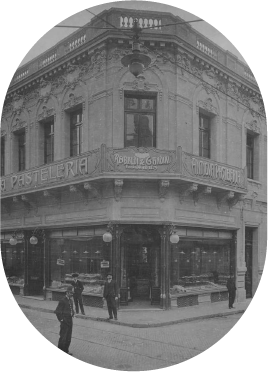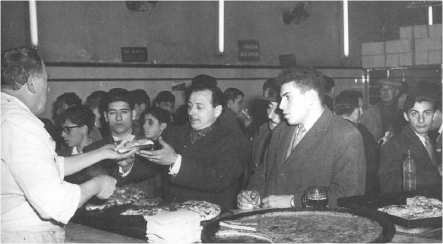¡Ciao!
Italians in Argentina:
a virtual exhibit
“Argentina is very Italian” is something you often hear. But what does that mean?
In this virtual exhibit, we will learn more about the history of Italian immigration to Argentina from the 1850s to the 1950s. There are stories about Italian influences on food and dance, Jewish-Italian refugees, and Italian missionaries among Indigenous people. With videos, songs, blogs, and maps, we will gain a sense of Italian experiences in Argentina and how Argentina was changed by these same encounters.

Italians were the largest group of immigrants in Argentina for more than a century, starting in the 1850s, making up 71% of all immigrants in the 1860s, and still 45% in the decade after 1900. Learn more about the history of Italian immigration to the country.
Regional Origins of Italian Immigrants
Italians came from all over the peninsula, and they settled in many parts of Argentina. But in the beginning, as the liberal republic looked to Europe to transform its economy and expand westward and southward onto Indigenous lands, “Italians” overwhelmingly came from in and around the port city of Genoa. Shipping routes and personal networks were fundamental in enabling some people to migrate while many other people – in Italy and elsewhere in Europe – did not catch emigration fever for several more decades.


What did immigrants eat
and how did their food
become Argentine food?

Italian immigration to Argentina is the ensemble of millions of individual experiences.
Many people came for work and opportunity. Knowing somebody who was already in the country was an important factor in encouraging others to similarly seek work and opportunity.
A Catholic missionary in the Patagonia
Alberto Maria de Agostini was a Catholic missionary who worked to convert Indigenous peoples in southern Argentina and Chile. He worked among the Yámana, Alacalufes, Tehuelches y Araucanos. He also became a passionate mountaineer, ethnographer, photographer and cinematographer.
An Italian-Argentine Author
A short documentary created by the Museo de la Inmigración in Buenos Aires about children’s author Syria Poletti (1919-1991). Born and educated in Italy, Poletti immigrated to Argentina in 1939. Her work focuses on the difficulties faced by Italian immigrants, seen through the eyes of children.
OTHERS LEFT ITALY BECAUSE THEY HAD TO
In the 1930s, Argentina welcomed (albeit hesitantly) approximately 40,000 Jewish refugees. Most came from Germany and few from Poland and eastern Europe. Some Italian Jews also came to Argentina, following the well-worn paths of millions of other Italians. Learn about the objects that refugees brought with them in this curator’s article about Elena Pirani and Mario Lowenthal, who arrived in Buenos Aires in 1938.
The trunk of
a Jewish-Italian
Couple
A suitcase and a story of seeking a better life
Immigrants, women and singers in the early 20th century
In the late nineteenth and early twentieth centuries, approximately two million Italians arrived in Argentina. Most of them were peasants, farmers, and industrial workers, but there were also businessmen, teachers, musicians, and artists. In all cases, people were looking for opportunities that could not find at home.
What is more Argentine than tango?
Yet it was not only a music and dance that immigrants – especially Italians – produced but it is something clearly marked by the multicultural environment of Buenos Aires in the first half of the twentieth century. Many famous tangos relate the immigrant experience, including stories of sadness, nostalgia, and estrangement. Tango lyrics are also filled with Lunfardo, a hybrid language that emerged in Buenos Aires that was highly influenced by Piedmontese, Lombard, Venetian, Tuscan, Neapolitan, Calabrian, Sicilian, and Genoese. Many distinctive words in Argentine Spanish (mina, cana, guita, fiaca, morfar, etc) come from this mixing and perhaps live on because of their prevalence in classic tangos.
Italian Art and Architecture in the Chacarita Cemetery
Some Buenos Aires cemeteries are true open-air museums, rich in history and stories, tucked between the nooks and crannies of statues, tombs and mausoleums. La Chacarita is one of them, holding significant displays of Italian art and architecture, such as the pantheons of various immigrant cultural associations that have shaped the Argentine capital over time.


